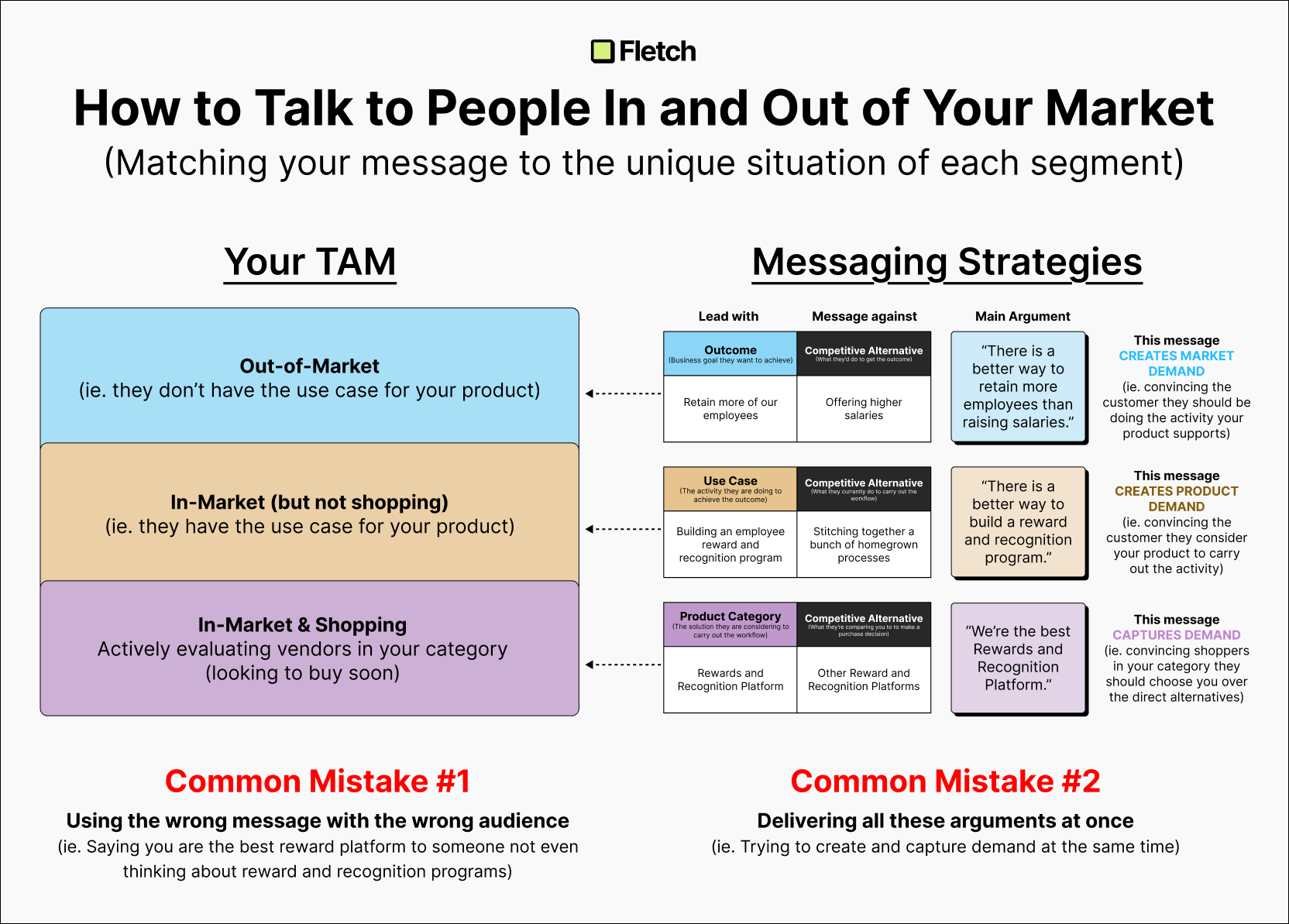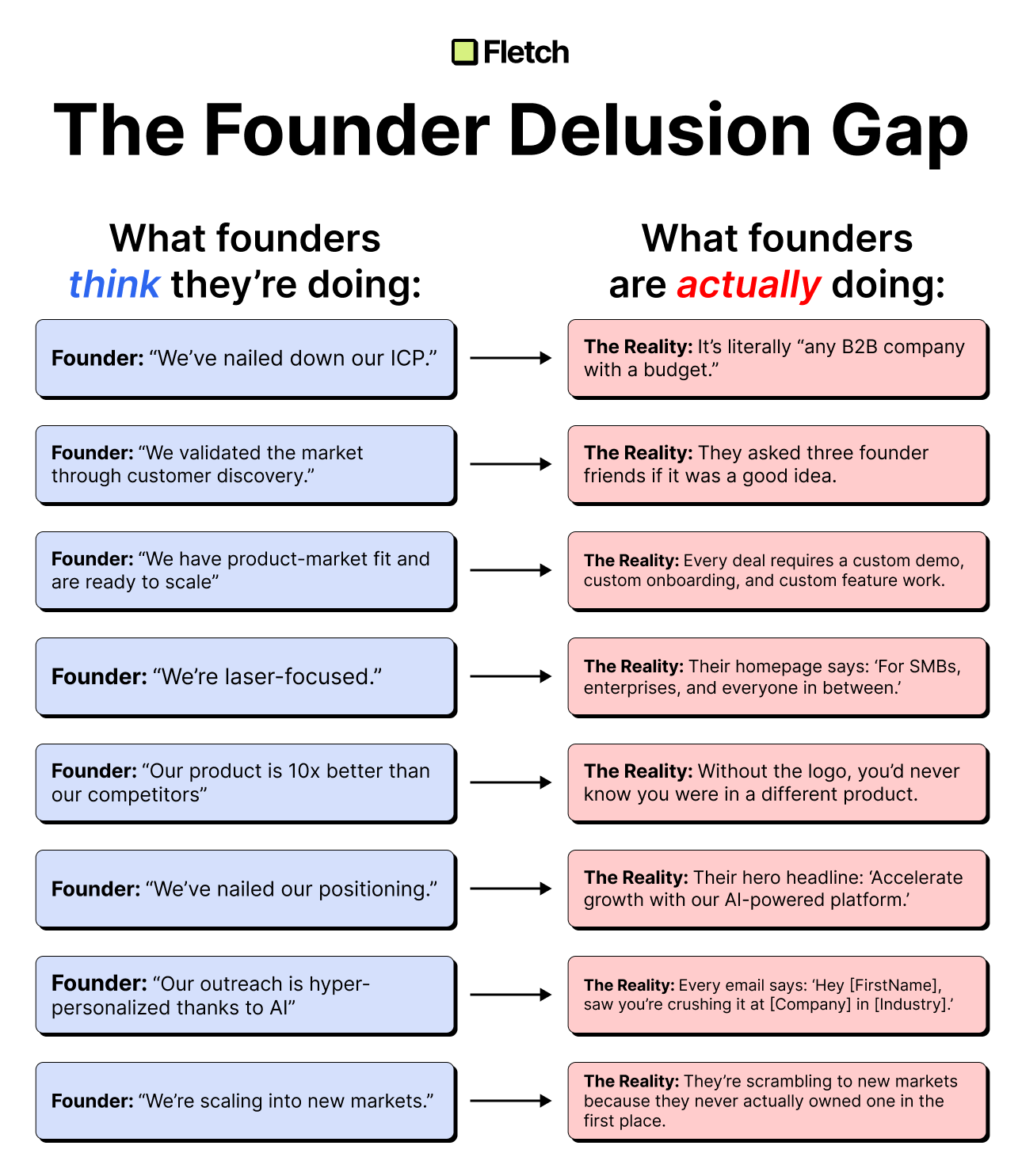Two Ways to Use Your Main Value Proposition


Your messaging to create demand IS DIFFERENT than your messaging to capture demand.
Here is how to think about the difference.
↳ And how to craft messaging for each.
(using Fletch’s value prop model)
1️⃣ 𝗠𝗲𝘀𝘀𝗮𝗴𝗲𝘀 𝗳𝗼𝗿 𝗖𝗿𝗲𝗮𝘁𝗶𝗻𝗴 𝗗𝗲𝗺𝗮𝗻𝗱
(ie. demand generation)
99% of your market is not actively shopping for your product.
So explaining your product’s value to this audience in your top-of-funnel marketing won’t be effective.
Instead, you should be messaging around the activities this “non-shopping” audience is doing (ie. use cases) AND spotlighting problems they are experiencing.
Using the framework, here are what the messaging elements look like for
:
🟤 Use Case → Scheduling meetings
This is the activity supported by Calendly’s product.
If the audience isn’t doing this activity, then they are completely outside of your market — and you should ignore them.
⚫ Competitive Alternative → Sending back and forth emails
This is how non-Calendly users are currently carrying out the use case.
🔴 Problem of the Alternative → This is annoying and time-consuming
This is the pain point of doing things in this alternative way.
To apply these messaging elements, you’ll translate the core ideas into copy that lives in your marketing assets. (social posts, blogs, ads, webinars, podcasts, etc.)
Here is what the hook of an ad or post might look like:
“Here’s how much time you’re wasting coordinating meetings over email…”
———
2️⃣ 𝗠𝗲𝘀𝘀𝗮𝗴𝗲𝘀 𝗳𝗼𝗿 𝗖𝗮𝗽𝘁𝘂𝗿𝗶𝗻𝗴 𝗗𝗲𝗺𝗮𝗻𝗱
Assuming you’ve created awareness of the problem your product solves, you can then message around the value of your product.
But remember, you’re just trying to get them to take a closer look — not convince them to buy the product.
To do this, you should be clear about the unique capabilities of your product and the expected benefit they would get.
Here are what the messaging elements look like for Calendly:
🟠 Capability - Send a single link to schedule meetings
This is the new unlock for prospective buyers.
It tells them what they would be doing differently compared to the alternative.
🟢 Feature - Booking link
This is what powers the main capability and is usually applied as supporting context to help a user understand how the product works.
🔵 Benefit - eliminate the back-and-forth emails
This is the positive outcome of using the capability + feature.
It’s usually the elimination or reduction of the product.
In most cases, you’ll translate these elements into different marketing assets (Home pages, landing pages, sales deck, partner enablement materials) — These are your demand capture assets.
———
Remember, your market has different levels of awareness about your product and the problem you solve.
You can’t message the same way to create and capture demand.
📨 Demand 𝗖𝗥𝗘𝗔𝗧𝗜𝗢𝗡 messages spotlight the problem.
🪤 Demand 𝗖𝗔𝗣𝗧𝗨𝗥𝗘 messages spotlight your solution.

Ben Wilentz
Founder, Stealth Startup





